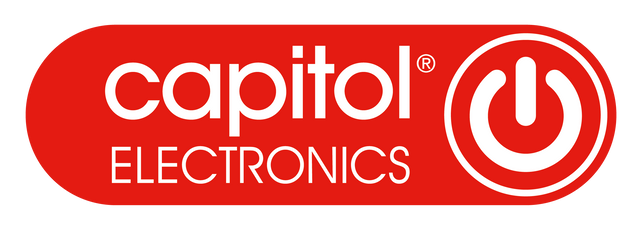info@capitolessentials.com

Think All Charging Cables Are the Same? Think Again!
We’ve all done it—bought the cheapest charging cable we could find without giving it a second thought. But here's the catch: not all charging cables are created equal. Whether you're juicing up your phone, transferring files, or using it for work, the type and quality of your cable can make a big difference. From speed and safety to durability and eco-friendliness, this guide peels back the layers on charging cables to help you make informed choices.
The Basics: What Is a Charging Cable Made Of?
Outer Insulation
The outer layer of a charging cable might look like a simple plastic cover, but it plays a critical role. It protects the internal components from moisture, bending, and physical damage.
Inner Shielding and Conductors
Beneath the surface, high-quality cables feature layers of shielding—metal foils or braided wires that minimise electromagnetic interference (EMI). Inside, copper or aluminium wires carry the electrical current and data. The purer the metal, the better the performance.
USB Types Explained
USB-A
The most recognisable type, found on older laptops and chargers. It’s reliable but limited in speed and power delivery.
USB-B
Less common now, but still used in printers and some external hard drives.
USB-C
The modern standard. Reversible, fast, and capable of carrying high-speed data and power simultaneously. Most new devices are shifting to USB-C for good reason.
Data Transfer Capabilities
A charging cable isn’t just about power—it’s also about speedy and secure data transfer.
-
USB 2.0: Up to 480 Mbps
-
USB 3.0: Up to 5 Gbps
-
USB 3.1/3.2: Up to 10–20 Gbps
If you're transferring large files or working with external drives, your cable’s data transfer specs matter a lot.
Cable Length: Does It Really Matter?
Yes, length does affect performance.
-
Shorter cables generally charge faster and transmit data more reliably.
-
Longer cables increase resistance, which can lead to slower charging and potential signal degradation.
Aim for a length that balances convenience and performance—usually 3 to 6 feet.
Durability and Material Quality
Premium cables often use:
-
Nylon braided exteriors for flexibility and strength
-
Gold or nickel-plated connectors for corrosion resistance
-
Reinforced stress points to handle frequent bending
Durability isn't just about avoiding frayed cables—it ensures your devices are protected from inconsistent connections or voltage drops.
The Truth About Cheap Cables
Low-cost cables may look appealing, but they often:
-
Use aluminium or copper-clad aluminium (CCA) instead of pure copper
-
Lack proper insulation or shielding
-
Overheat or fail quickly, posing real safety risks
Investing in a quality cable might save you from replacing devices or facing electrical issues.
Safety Risks of Low-Quality Cables
Counterfeit or poorly-made cables can:
-
Overheat and start fires
-
Damage batteries through inconsistent power delivery
-
Fail to include resistors that protect your devices from overcurrent
Always look for cables that meet safety certifications like UL, CE, or FCC.
Environmental Impact of Cable Waste
Did you know that over 50 million tons of electronic waste are produced each year globally? Cheap, short-lived cables contribute significantly to this issue.
-
Look for eco-certified or recyclable cables
-
Choose multi-functional cables to reduce clutter and waste
Reducing e-waste starts with buying better, not more.
Wireless vs. Wired Charging Cables
Wireless is convenient, but it’s not a one-size-fits-all solution.
| Feature | Wired Charging | Wireless Charging |
|---|---|---|
| Speed | Faster | Slower |
| Portability | More compact | Needs pad or stand |
| Compatibility | Universal (with correct cable) | Limited to Qi-enabled devices |
| Efficiency | 95–100% | 60–80% |
Wired cables are still the more efficient and versatile option for most users.
How to Choose the Right Cable for Your Needs
Here’s a quick checklist:
-
Check for fast charging compatibility
-
Look for reputable safety certifications
-
Choose the right length for your usage
-
Opt for quality materials like nylon and pure copper
-
Consider data transfer speed needs
-
Avoid overly cheap or generic brands
FAQs
Q1: Why won’t my phone charge fast even with a fast charger?
A: Your cable might not support fast charging. Make sure it's rated for the same fast-charging standard as your charger and phone.
Q2: Are all USB-C cables the same?
A: No. USB-C is a connector type, but cables vary widely in power and data specs.
Q3: Can a bad cable damage my phone?
A: Yes. Low-quality cables can cause overheating, short circuits, or battery issues.
Q4: How can I tell if a cable supports data transfer?
A: Check the product specs. Some charging-only cables lack the data transfer lines.
Q5: Do magnetic charging cables work well?
A: They’re convenient, but often don’t support fast charging or high-speed data transfer.
Q6: What’s the lifespan of a good charging cable?
A: A well-made cable can last 2–5 years with normal use, especially if it has reinforced joints and quality insulation.
Conclusion
In a world where every device needs a reliable power source, charging cables are more than just accessories—they’re essential tech tools. Whether you're concerned about charging speed, safety, or sustainability, making the right choice can improve your daily tech experience and protect your devices in the long run. So next time you shop for a cable, remember: they’re not all the same—and now you know exactly why.
Shop our range of Braided Charging Cables
Braided 100W Type C to Type C Charging Cable
Braided PD20W Lightning to Type C Fast Charging Cable
View our full range of charging cables here.



